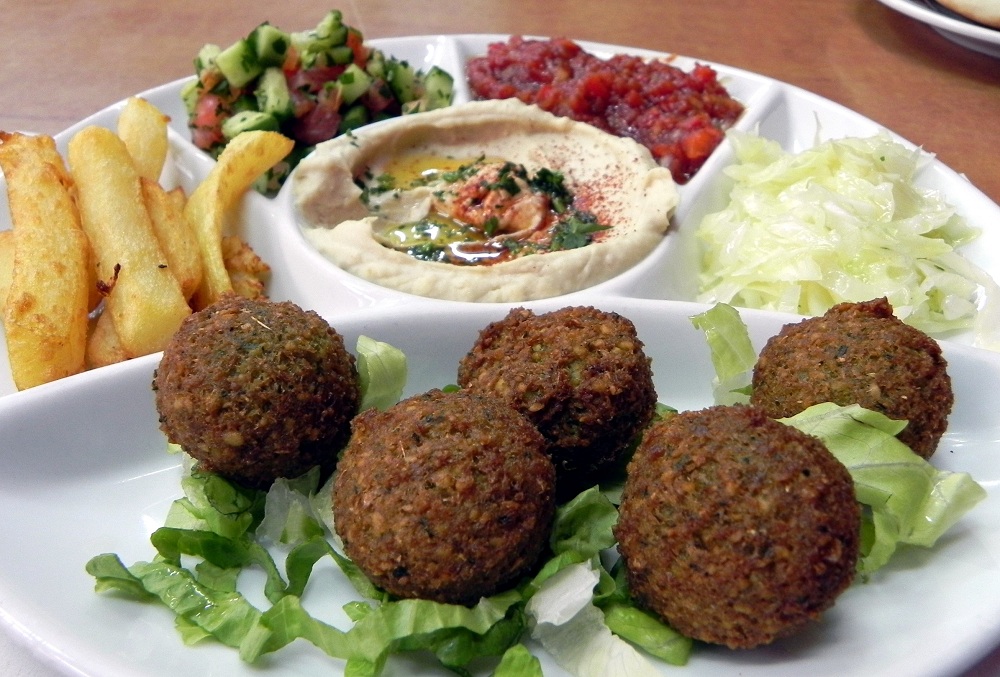Like many other Asian cuisines, Middle Eastern food has become commonplace throughout the world. Particularly in western countries, foods like hummus, shish kebab, falafel, grilled halloumi and tabbouleh get more popular every year. Unfortunately, many of the Middle Eastern dishes served to American and European diners are less than authentic.
While it’s still a perfectly good way to experience Middle Eastern cuisine, there’s a world of recipes out there for cooks who want to get back to its roots. This article discusses some lesser-known delicacies from a region famed for its vibrant use of spices, pulses, nuts and grains. These regional dishes are bold, aromatic and guaranteed to satisfy your stomach.
1. Fesenjoon
Fesenjoon is an Iranian dish characterized by its indulgent combination of rich, creamy flavors. It’s what’s known as a regional ‘khoresh’ (stew) and contains diced chicken slowly cooked in a rich pomegranate and walnut sauce. The dish is simmered for many hours to ensure the poultry absorbs plenty of walnut oil. The result is a mild but deeply creamy stew with fruity notes from the pomegranate syrup. Fesenjoon is normally served with white rice and natural yogurt.
2. Shish Barak
Shish Barak is rare outside the Middle East. It’s unfortunate because the dish delivers a culinary experience like no other. It’s traditionally a Levant meal though it’s also enjoyed in parts of Iraq, Lebanon and Syria. Shish barak is so rare because it’s almost always served at home even in the Middle East.
The dish contains small dumplings made from spiced minced lamb or beef. The meat is wrapped in neat parcels of dough until they look a bit like perogies. These meat parcels are then baked for a short time before being added to natural yogurt. The parcels are carefully boiled in the yogurt – curdling is a risk – which is seasoned with mint and garlic. When finished, shish barak is an extraordinary blend of creamy, spicy, earthy flavors.
3. Maqluba
Maqluba is a tricky dish to get right but, when it does go right, it’s a joy to serve. It’s a Palestinian recipe made up of meat (usually chicken or lamb), rice and vegetables like potatoes, tomatoes, cauliflowers and aubergines. The cooking of these ingredients is fairly straightforward. It’s the construction of the dish that’s extra special.
All of these ingredients are layered into a deep pot and topped with an uppermost layer of white rice. While everybody makes their maqluba a little differently, most versions cook the rice at the top and vegetables at the bottom with the other ingredients somewhere in the middle. When ready to eat, the entire pot is inverted so that the rice ends up on the bottom and the vegetables on the top. It’s essentially a savory upside-down cake.
4. Mandi
The Yemeni dish mandi is surprisingly simple to make considering the succulence of its flavors. It originates from the Hadhramaut region of the country and makes use of the traditional combination of meat or poultry, rice and spices. Mandi is made with other meats, but the commonest is chicken.
The chicken is first cooked in a tandoor oven to give it a deliciously smoky flavor and soft, tender texture. It is then served on top of rice which has been flavored with turmeric, cinnamon, cloves and cardamom. Sometimes, sultanas and various roasted nuts are also added to mandi. As this dish is robust and filling, it’s a popular choice for big family dinners and celebration feasts.
5. Kushari
Though it’s considered Egypt’s national dish by many, kushari is not well known outside the Middle East. What a shame because this colorful meal is easy to make and guaranteed to satisfy even the hungriest of stomachs. It’s the type of recipe you might refer to as a ‘pantry dish’ because it can make use of leftovers.
For this reason, recipes vary depending on what ingredients are available at the time. The typical kushari includes rice and pasta, chickpeas, tomatoes and lentils. The cooked ingredients are mixed together in a bowl and topped with a rich, spicy and vinegary tomato based sauce. In Egypt today, it’s not unusual to see kushari being served and eaten as a street food dish.
The Final Word on Middle Eastern Foods
The Middle East is a vast and vibrant region filled with diverse and interesting cuisines. To truly experience what this part of the world has to offer, you need to cast your culinary net wide and try recipes from lots of different regions.
What’s popular in Afghanistan is naturally different from what’s popular in Iraq. What thrills taste buds in Lebanon is not the same as what excites diners in Oman. The Middle Eastern dishes featured on our list are just a small sample of the traditional foods out there for you to explore and enjoy.
